3,4-Dimethylacetophenone
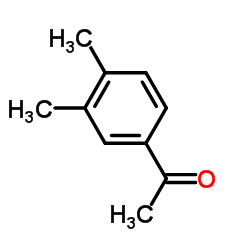
3,4-Dimethylacetophenone structure
|
Common Name | 3,4-Dimethylacetophenone | ||
|---|---|---|---|---|
| CAS Number | 3637-01-2 | Molecular Weight | 148.202 | |
| Density | 1.0±0.1 g/cm3 | Boiling Point | 246.5±0.0 °C at 760 mmHg | |
| Molecular Formula | C10H12O | Melting Point | N/A | |
| MSDS | Chinese USA | Flash Point | 102.8±0.0 °C | |
| Name | 3',4'-Dimethylacetophenone |
|---|---|
| Synonym | More Synonyms |
| Density | 1.0±0.1 g/cm3 |
|---|---|
| Boiling Point | 246.5±0.0 °C at 760 mmHg |
| Molecular Formula | C10H12O |
| Molecular Weight | 148.202 |
| Flash Point | 102.8±0.0 °C |
| Exact Mass | 148.088821 |
| PSA | 17.07000 |
| LogP | 2.59 |
| Vapour Pressure | 0.0±0.5 mmHg at 25°C |
| Index of Refraction | 1.510 |
| InChIKey | WPRAXAOJIODQJR-UHFFFAOYSA-N |
| SMILES | CC(=O)c1ccc(C)c(C)c1 |
Synonym:None Section 2 - COMPOSITION, INFORMATION ON INGREDIENTS
Risk Phrases: None Listed. Section 3 - HAZARDS IDENTIFICATION EMERGENCY OVERVIEW
The toxicological properties of this material have not been fully investigated. Potential Health Effects Eye: May cause eye irritation. Skin: May cause skin irritation. Ingestion: May cause gastrointestinal irritation with nausea, vomiting and diarrhea. The toxicological properties of this substance have not been fully investigated. Inhalation: May cause respiratory tract irritation. The toxicological properties of this substance have not been fully investigated. Chronic: No information found. Section 4 - FIRST AID MEASURES Eyes: Flush eyes with plenty of water for at least 15 minutes, occasionally lifting the upper and lower eyelids. Get medical aid. Skin: Flush skin with plenty of water for at least 15 minutes while removing contaminated clothing and shoes. Get medical aid if irritation develops or persists. Ingestion: Do not induce vomiting. If victim is conscious and alert, give 2-4 cupfuls of milk or water. Never give anything by mouth to an unconscious person. Get medical aid. Inhalation: Remove from exposure and move to fresh air immediately. If not breathing, give artificial respiration. If breathing is difficult, give oxygen. Get medical aid if cough or other symptoms appear. Notes to Physician: Section 5 - FIRE FIGHTING MEASURES General Information: As in any fire, wear a self-contained breathing apparatus in pressure-demand, MSHA/NIOSH (approved or equivalent), and full protective gear. Extinguishing Media: Use water spray, dry chemical, carbon dioxide, or chemical foam. Section 6 - ACCIDENTAL RELEASE MEASURES General Information: Use proper personal protective equipment as indicated in Section 8. Spills/Leaks: Absorb spill with inert material (e.g. vermiculite, sand or earth), then place in suitable container. Clean up spills immediately, observing precautions in the Protective Equipment section. Section 7 - HANDLING and STORAGE Handling: Wash thoroughly after handling. Wash hands before eating. Use with adequate ventilation. Do not get on skin or in eyes. Avoid ingestion and inhalation. Storage: Store in a cool, dry place. Store in a tightly closed container. Section 8 - EXPOSURE CONTROLS, PERSONAL PROTECTION Engineering Controls: Use adequate ventilation to keep airborne concentrations low. Exposure Limits CAS# 3637-01-2: Personal Protective Equipment Eyes: Wear appropriate protective eyeglasses or chemical safety goggles as described by OSHA's eye and face protection regulations in 29 CFR 1910.133 or European Standard EN166. Skin: Wear appropriate protective gloves to prevent skin exposure. Clothing: Wear appropriate protective clothing to prevent skin exposure. Respirators: Follow the OSHA respirator regulations found in 29 CFR 1910.134 or European Standard EN 149. Use a NIOSH/MSHA or European Standard EN 149 approved respirator if exposure limits are exceeded or if irritation or other symptoms are experienced. Section 9 - PHYSICAL AND CHEMICAL PROPERTIES Physical State: Liquid Color: clear, colorless Odor: Not available. pH: Not available. Vapor Pressure: Not available. Viscosity: Not available. Boiling Point: 243 deg C @ 760.00mm Hg Freezing/Melting Point: Not available. Autoignition Temperature: Not available. Flash Point: 102 deg C ( 215.60 deg F) Explosion Limits, lower: Not available. Explosion Limits, upper: Not available. Decomposition Temperature: Solubility in water: Specific Gravity/Density: 1.0010g/cm3 Molecular Formula: C10H12O Molecular Weight: 148.20 Section 10 - STABILITY AND REACTIVITY Chemical Stability: Stable under normal temperatures and pressures. Conditions to Avoid: Incompatible materials. Incompatibilities with Other Materials: Strong oxidizing agents and strong bases. Hazardous Decomposition Products: Carbon monoxide, carbon dioxide. Hazardous Polymerization: Has not been reported. Section 11 - TOXICOLOGICAL INFORMATION RTECS#: CAS# 3637-01-2 unlisted. LD50/LC50: Not available. Carcinogenicity: 3',4'-Dimethylacetophenone, 97% - Not listed by ACGIH, IARC, or NTP. Section 12 - ECOLOGICAL INFORMATION Section 13 - DISPOSAL CONSIDERATIONS Dispose of in a manner consistent with federal, state, and local regulations. Section 14 - TRANSPORT INFORMATION IATA Not regulated as a hazardous material. IMO Not regulated as a hazardous material. RID/ADR Not regulated as a hazardous material. Section 15 - REGULATORY INFORMATION European/International Regulations European Labeling in Accordance with EC Directives Hazard Symbols: Not available. Risk Phrases: Safety Phrases: S 24/25 Avoid contact with skin and eyes. WGK (Water Danger/Protection) CAS# 3637-01-2: No information available. Canada CAS# 3637-01-2 is listed on Canada's DSL List. CAS# 3637-01-2 is not listed on Canada's Ingredient Disclosure List. US FEDERAL TSCA CAS# 3637-01-2 is listed on the TSCA inventory. SECTION 16 - ADDITIONAL INFORMATION N/A |
| Personal Protective Equipment | Eyeshields;Gloves |
|---|---|
| Hazard Codes | Xn:Harmful; |
| Risk Phrases | R20/22;R36 |
| Safety Phrases | S39-S26 |
| RIDADR | NONH for all modes of transport |
| WGK Germany | 3 |
| HS Code | 2914399090 |
| Precursor 10 | |
|---|---|
| DownStream 10 | |
| HS Code | 2914399090 |
|---|---|
| Summary | 2914399090. other aromatic ketones without other oxygen function. VAT:17.0%. Tax rebate rate:13.0%. . MFN tariff:5.5%. General tariff:30.0% |
|
Using cyclooxygenase-2 inhibitors as molecular platforms to develop a new class of apoptosis-inducing agents.
J. Natl. Cancer Inst. 94(23) , 1745-57, (2002) The cyclooxygenase-2 (COX-2) inhibitor celecoxib is thought to act as a chemopreventive agent by sensitizing cancer cells to apoptotic signals. Other COX-2 inhibitors, such as rofecoxib, are two order... |
|
|
Select acetophenones modulate flagellar motility in chlamydomonas.
Chem. Biol. Drug Des. 75 , 333-337, (2010) Acetophenones were screened for activity against positive phototaxis of Chlamydomonas cells, a process that requires co-ordinated flagellar motility. The structure-activity relationships of a series o... |
| Ethanone, 1-(3,4-dimethylphenyl)- |
| MFCD00008743 |
| EINECS 222-859-2 |
| 3,4-Dimethylacetophenone |
| 1-(3,4-Dimethylphenyl)ethanone |
| 3′,4′-Dimethylacetophenone |
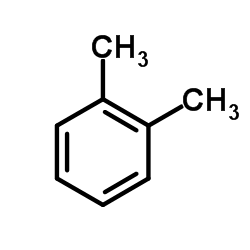 CAS#:95-47-6
CAS#:95-47-6 CAS#:108-24-7
CAS#:108-24-7 CAS#:6196-95-8
CAS#:6196-95-8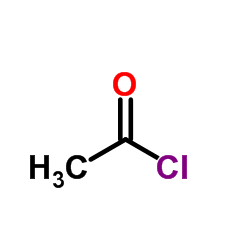 CAS#:75-36-5
CAS#:75-36-5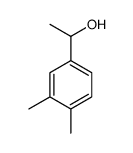 CAS#:33967-19-0
CAS#:33967-19-0 CAS#:201230-82-2
CAS#:201230-82-2 CAS#:594-27-4
CAS#:594-27-4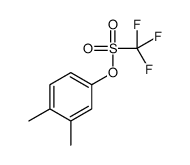 CAS#:255837-23-1
CAS#:255837-23-1 CAS#:27831-13-6
CAS#:27831-13-6 CAS#:137958-20-4
CAS#:137958-20-4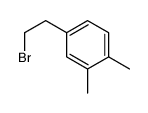 CAS#:103323-56-4
CAS#:103323-56-4 CAS#:36436-65-4
CAS#:36436-65-4 CAS#:50419-58-4
CAS#:50419-58-4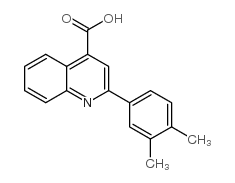 CAS#:20389-06-4
CAS#:20389-06-4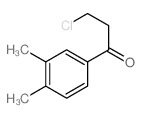 CAS#:22422-23-7
CAS#:22422-23-7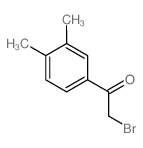 CAS#:2633-50-3
CAS#:2633-50-3 CAS#:934-80-5
CAS#:934-80-5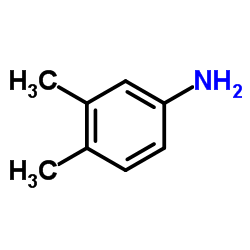 CAS#:95-64-7
CAS#:95-64-7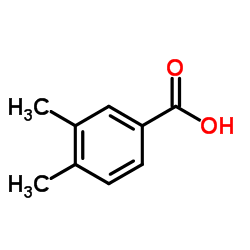 CAS#:619-04-5
CAS#:619-04-5![[1-(3,4-dimethylphenyl)ethylideneamino]urea structure](https://image.chemsrc.com/caspic/256/103852-97-7.png) CAS#:103852-97-7
CAS#:103852-97-7
